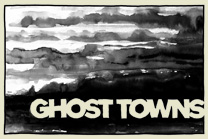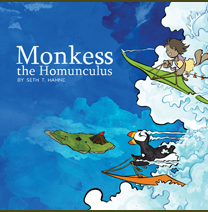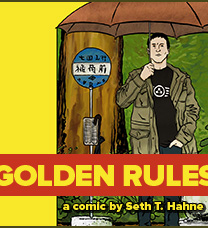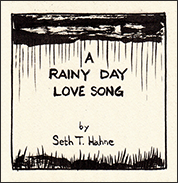Sailor Twain
Toothless and tamed. Declawed and domesticated. Over time, the old legends evolve from being terrible and terrifying to existing as pacified gentilities. As the world is industrialized (and more, technologized), our fear of the fantastic is replaced by something more civilized. We’ve traded the savage for the banal. And certainly, some of us prefer the latter to the former. Because fearing fantasies is distasteful to a society that is smarter than that, we make our monsters into men and our men into monsters. And as much as we gain for the transformation of our cultural lore, we do lose something in the process.
Disney, for its part in revitalizing the traditional lore of Western civilization, has robbed nearly every legend in its stable of its teeth. Sleeping Beauty, Pinocchio, Snow White, Rapunzel, The Hunchback of Notre Dame, Robin Hood, and The Jungle Book. Each of these have been sanitized for the consumption of post-19th-century audiences for whom the production company believes the raw source to be too stark, too grim, too violent, or too sexy. In some cases, the inoculation of these stories from more disturbing elements distances the Disney films so far from source that it becomes difficult to even posit the one as adaption of the other.

The great (and deserved) popularity of Disney’s 1989 adaptation of The Little Mermaid certainly defanged Hans Christian Anderson’s story, but more: the Disney company’s vision of mermaids all but obliterated societal consciousness of what mermaids used to be.11All blame for the pacification of mermaid lore cannot be laid entirely at the 1989 movie’s feet. All through the 20th century, mermaids had been moving toward something friendlier and more human. Disney’s Peter Pan, for instance, softens J.M. Barrie’s dangerous mermaids (who would have drowned Wendy had Peter not been vigilant) into something naughty rather than outright nasty. Also, my wife here interjects that the mermaid in Little Bear, for all we see of her, is a kindly soul. Even Anderson’s original Little Mermaid (which included cutting out the mermaid’s tongue, the mermaid contemplating murdering the prince in order to restore her mer-form, and the mermaid failing in her quest and being dissolved into sea foam) was a departure from the traditional lore and rendered the mermaid in softer tone than predecessors.
It might be more fair to say, then, that the pacification of the mermaid was gradual and only culminated in Disney’s 1989 adaptation. Today, the mermaid is a creature of whimsy and delight—a creature who falls in love with humans and goes to lengths to win true to that romance. The end of the matter is that today, categorically, mermaids are not monsters.
And in a way, this is too bad.
As much as there is no reason that the myths of a former culture shouldn’t be reappropriated, subverted, and recast to communicate something relevant to succeeding cultures, it can be worthwhile to retain at least a historical appreciation for the things that have been said previously. So as much as mermaids today are Not Monsters and Not Dangerous, it can be refreshing to rediscover an era in which they were.
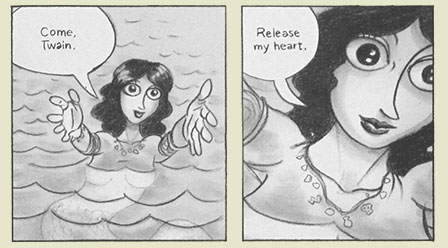 Any sensible person would at exactly this point turn right around.
Any sensible person would at exactly this point turn right around.
On the other hand: boobs.
For centuries, mermaids were known as creatures of havoc—happy to destroy the lives of sailors. Long linked to the sirens of Greek myth, the sociological purpose of their legend seemed to have been pedagogical, speaking to the danger of the seductress. Mermaids would use their allurements (both in voice and body) to draw sailors to a death of submergement. They represent the futility of the male passion in that their upper torsos (what would be visible above the waves) picture the truest and most desirable physical beauty, while the body existing below the waist offers no culmination to the male romantic expression.22Certain expressions of the mermaid have sought to subvert this—notably, Starbucks’ original mermaid icon, featuring a topless creature with two tails, spread as legs and inviting romantic consummation. Doomed loves, doomed lives. And refreshingly, it is this kind of mermaid lore that Mark Siegel explores in his long-awaited33I actually first encountered Sailor Twain what feels like a long time ago when Siegel first began publishing pages as a webcomic. As I don’t have the patience to return to a webcomic week after week to make incremental progress through its story, I promptly forgot that it existed—despite thinking it looked beautiful. When I discovered that it had been collected into a single hardback, I was excited and knew I had to see where Siegel went with things. I was, fair warning, predisposed to enjoy this book. graphic novel, Sailor Twain: Or the Mermaid in the Hudson.
Doomed loves, doomed lives. And refreshingly, it is this kind of mermaid lore that Mark Siegel explores in his long-awaited33I actually first encountered Sailor Twain what feels like a long time ago when Siegel first began publishing pages as a webcomic. As I don’t have the patience to return to a webcomic week after week to make incremental progress through its story, I promptly forgot that it existed—despite thinking it looked beautiful. When I discovered that it had been collected into a single hardback, I was excited and knew I had to see where Siegel went with things. I was, fair warning, predisposed to enjoy this book. graphic novel, Sailor Twain: Or the Mermaid in the Hudson.
Sailor Twain is a triumph of collaboration. Lore, history, mood, social ethics, and romance swirl together, weaving a thing of ominous beauty. The mermaids’ contemporary myth is subverted in the book’s reclamation of the antique myth. In telling the tale of Captain Elijah Twain, Siegel skates through and about a world pitting loyalty against lust, where temptation holds court and the verdict is yet to be decided. This is a story about sex, about desire, and about how dangerous these things can be when directed without discretion. In a way, the book offers a moral as quaint as the lore with which it concerns itself—though even this moral is twisted in deliciously challenging ways as happily-ever-after careens drunkenly from comfortable expectation. Siegel raises delicious questions to challenge our presuppositions through a story illustrated and written with obvious care.
Siegel’s narrative concerns Elijah Twain, charged with the captaincy of the Hudson river steamboat Lorelei. It’s 1887 and Twain (no relation to the author, who wasn’t really named that anyway) is a man of strict personal governance, bound by his morals, his promises, and his watch. One evening, he discovers crawling onto his deck a wounded mermaid, a victim of a harpoon. Her name means South and he cares for her injuries; things both ravel and unravel from the beginning of his stewardship of her.

I’m not certain if I prefer Siegel the writer or Siegel the artist. The book in its sheer physicality is a joy to encounter. It’s well-bound, has a nice mermaid embossed on its cover, and contains gorgeous art. Siegel’s art is cartoony but expressive, reminiscent (to me at least) of some of the European comics I’ve encountered over the years and nearly the entire thing is composed in charcoals, giving the book a melancholy softness. In Sailor Twain's panoply of greys, the reader will find herself suffused in an exotic romance of dueling shadows. But for all that, it may be that Siegel’s non-visual storytelling is still more impressive.
It’s clear that Siegel has put plenty of research into this book, from the requisite study of lore to investigations into the Hudson’s historical environs. Beyond that though, it’s his use of literary device that wins my heart. While Twain is tempted by the sea-born siren, whose physiognomy renders her impossible for romantic liaison, his own wife of seven years (Pearl) is crippled below the waist and is known especially for a singing voice gifted from the Divine himself. It is unclear whether Pearl’s condition renders her incapable of sexual alliance, but Siegel almost certainly has this juxtaposition between South and Pearl in mind. When Twain asks his wife if they are a couple of cold fish, the reader is on alert and winking back at Siegel—and again on the next page when Twain asks Pearl if she’s ready for the next day and she responds “A few scales and I will be.” The captain is torn between the mermaid he rescued and the siren whom he married, neither of whom will give him satisfaction. And it’s in the midst of this that Siegel’s story finds its sinew, bone, and life’s blood.
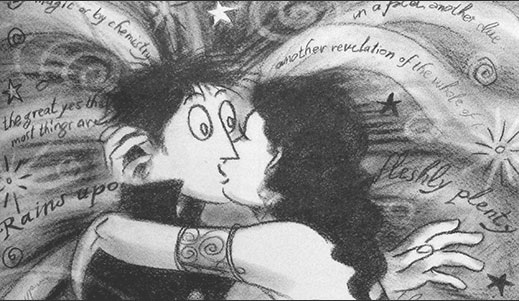 Whoops. Instamuse.
Whoops. Instamuse.
In all honesty, I found Sailor Twain breathtaking. I was predisposed to like it but I didn’t expect to find it as beautiful and haunting44I think probably 85% of all reviews of this work will find some way to use the word haunting to describe it. The others will use chilling. as it is. Siegel’s book will certainly find itself in my Top Ten for the year and is now entrenched in that collection of comics works that I consider Essential Reading for those interested in charting the medium. I will almost certainly be recommending this to scads of friends.
Note to Parents
If it’s the kind of thing to concern you, the mermaid (as mermaids ought to be) is entirely topless for the book’s length. That is to say: there is a half-nude woman on roughly a quarter of Sailor Twain's nearly 400 pages. It’s important to the narrative and true to the lore but will bother some parents of young readers. There is, as well, a smattering of sexuality and some murderous violence and death—but for one reason or another, it’s the nudity that tends to catch attention so I thought I’d mention it, lest you sight-unseen order the fun mermaid book for eleven-year-old Johnny and add greater fuel to his immature perversions, sending him deep into the realms of mermaid fetishism. Or something.
Also, the above images have been edited slightly to render South’s nudity less distinct. Because fetishists.
Good Ok Bad features reviews of comics, graphic novels, manga, et cetera using a rare and auspicious three-star rating system. Point systems are notoriously fiddly, so here it's been pared down to three simple possibilities:
3 Stars = Good
2 Stars = Ok
1 Star = Bad
I am Seth T. Hahne and these are my reviews.
Support me by buying my art on Etsy
Review copy submission may be facilitated via the Contact page.
Browse Reviews By
Other Features
- Popular Sections:
- All-Time Top 500
- All the Boardgames I've Played
- All the Anime Series I've Seen
- All the Animated Films I've Seen
- Top 75 by Female Creators
- Kids Recommendations
- Daily Recommendations
- What I Read: A Reading Log
- Best Books of the Year:
- Top 100 of 2020-22
- Top 75 of 2019
- Top 50 of 2018
- Top 75 of 2017
- Top 75 of 2016
- Top 75 of 2015
- Top 75 of 2014
- Top 35 of 2013
- Top 25 of 2012
- Top 10 of 2011
- Other Features:
- Why I ❤ Zita the Spacegirl
- 31 Days of Comics
- Bookclub Study Guides
- Sitemap








